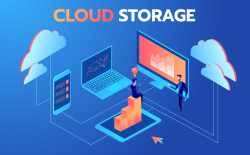In today’s digital age, the insurance industry is undergoing a transformation. Traditional methods of calculating premiums based on factors like age, driving history, and location are being challenged by innovative approaches such as telematics, usage-based insurance (UBI), and pay-as-you-drive. These new methods utilize technology to track driving behavior, providing insurers with accurate data to determine personalized premiums for policyholders. In this article, we will explore the differences between telematics, UBI, and pay-as-you-drive insurance, and how they are shaping the future of auto insurance.
Telematics: The Foundation of Personalized Insurance
Telematics is a term often used interchangeably with UBI and pay-as-you-drive insurance, but it refers specifically to the technology used in these programs to monitor driving habits. By utilizing onboard diagnostics and GPS technology, telematics programs track various aspects of driving behavior, such as acceleration, braking, and cornering speed. This data is then transmitted to the insurance provider, who uses it to assess risk and determine premiums.
Telematics can be implemented through either a smartphone app or a device installed in the vehicle. The app-based approach allows policyholders to conveniently track their driving habits using their smartphones, while the device-based approach offers more accurate data by directly accessing the vehicle’s onboard systems.
It is important to note that telematics programs are not yet available nationwide in Canada. Currently, they are offered in provinces such as Ontario, Alberta, Nova Scotia, New Brunswick, P.E.I., and Quebec. Additionally, some insurance companies may have limitations on the availability of telematics for certain vehicles, such as electric or diesel cars, or those manufactured before 2005.
Usage-Based Insurance: A Holistic Approach to Risk Assessment
Usage-based insurance (UBI) takes telematics a step further by monitoring a wide range of driving habits, beyond just acceleration and braking. UBI programs track factors such as how and when a driver accelerates, brakes, and takes turns. Some programs even monitor additional behaviors like texting or making handheld calls while driving. By collecting this comprehensive data, insurers gain a more accurate understanding of a policyholder’s risk profile, allowing for personalized premiums based on individual driving habits.
The popularity of usage-based insurance is on the rise in Canada. According to recent data from LowestRates.ca, there has been a significant 43% year-over-year surge in usage-based insurance quotes on their site from 2019 to 2020. This indicates a growing interest among Canadian drivers in UBI as a more fair and accurate way to determine insurance premiums.
Pay-as-You-Drive Insurance: Tailoring Premiums to Mileage
While UBI focuses on multiple driving behaviors, pay-as-you-drive insurance primarily considers the distance driven by a policyholder. With this approach, policyholders are charged based on the number of kilometers they drive, rather than their driving habits. Pay-as-you-drive insurance offers a more flexible and cost-effective solution for individuals who do not drive frequently or have low annual mileage.
The concept behind pay-as-you-drive insurance is simple: if you drive less, you pay less for insurance. This is particularly beneficial for individuals who use their vehicles sparingly, such as those who only drive to run errands or commute short distances. By adjusting premiums based on mileage, pay-as-you-drive insurance aims to provide fairer pricing for policyholders whose driving habits may pose less risk.
One example of a pay-as-you-drive program is the MyPace program offered by the Canadian Automobile Association (CAA). Under this program, policyholders who drive less than 9,000 kilometers per year can benefit from significant discounts. For instance, driving only 1,000 kilometers a year can result in savings of up to 70%, while driving 3,000 kilometers can save policyholders 50%.
![]()
Comparing Telematics, UBI, and Pay-as-You-Drive Insurance
To better understand the differences between telematics, UBI, and pay-as-you-drive insurance, let’s summarize their key characteristics in a table:
| Feature | Telematics | Usage-Based Insurance (UBI) | Pay-as-You-Drive Insurance |
|---|---|---|---|
| Driving Habits Tracked | Acceleration, braking, turning | Acceleration, braking, turning, texting, handheld calls | Mileage |
| Personalized Premiums | Yes | Yes | Yes |
| Availability | Limited to certain provinces and vehicles | Limited to certain provinces | Available |
| Benefits | Encourages safer driving habits | Provides fairer premiums based on comprehensive driving data | Saves money for low-mileage drivers |
| Limitations | Limited availability and compatibility | Limited availability | Not suitable for high-mileage drivers |
Privacy Concerns and Regulatory Compliance
As with any technology that involves the collection and transmission of personal data, privacy concerns may arise. Many individuals worry about insurance companies sharing their driving data with law enforcement agencies. However, it is crucial to note that insurance providers in Canada must adhere to provincial privacy laws, as well as the Privacy Act and the Personal Information Protection and Electronic Documents Act (PIPEDA). These regulations ensure that policyholders’ personal data is handled responsibly and with the utmost privacy.
If you have concerns about privacy or data security, it is advisable to speak directly with an insurance provider to understand their data handling practices and ensure that they align with your expectations.
Choosing the Right Insurance Program
When considering telematics, UBI, or pay-as-you-drive insurance, it is essential to evaluate your driving habits and individual needs. If you are a safe and responsible driver, telematics-based insurance programs may offer significant savings on your premiums. Conversely, if you are a new driver looking to improve your skills and establish a good insurance history, UBI can provide valuable insights into areas for improvement.
For those who drive infrequently or have low mileage, pay-as-you-drive insurance can be a cost-effective option. By only paying for the kilometers you drive, you can save money on your premiums while still maintaining the necessary coverage.
To find the best insurance program for your driving habits, it is recommended to compare offerings from different insurance providers. Websites like LowestRates.ca offer free rate comparison services, allowing you to explore various options and choose the program that suits your needs and budget.
Conclusion
The advent of telematics, usage-based insurance (UBI), and pay-as-you-drive insurance has revolutionized the auto insurance industry. These innovative approaches leverage technology to track driving behavior, enabling insurers to offer personalized premiums based on individual risk profiles. Whether you prefer a comprehensive analysis of your driving habits or a simple pay-as-you-go approach based on mileage, there is an insurance program tailored to your needs.
As the insurance landscape continues to evolve, it is vital for drivers to stay informed about the latest developments. By understanding the differences between telematics, UBI, and pay-as-you-drive insurance, you can make informed decisions about your auto insurance coverage and potentially save money based on your individual driving habits.





















